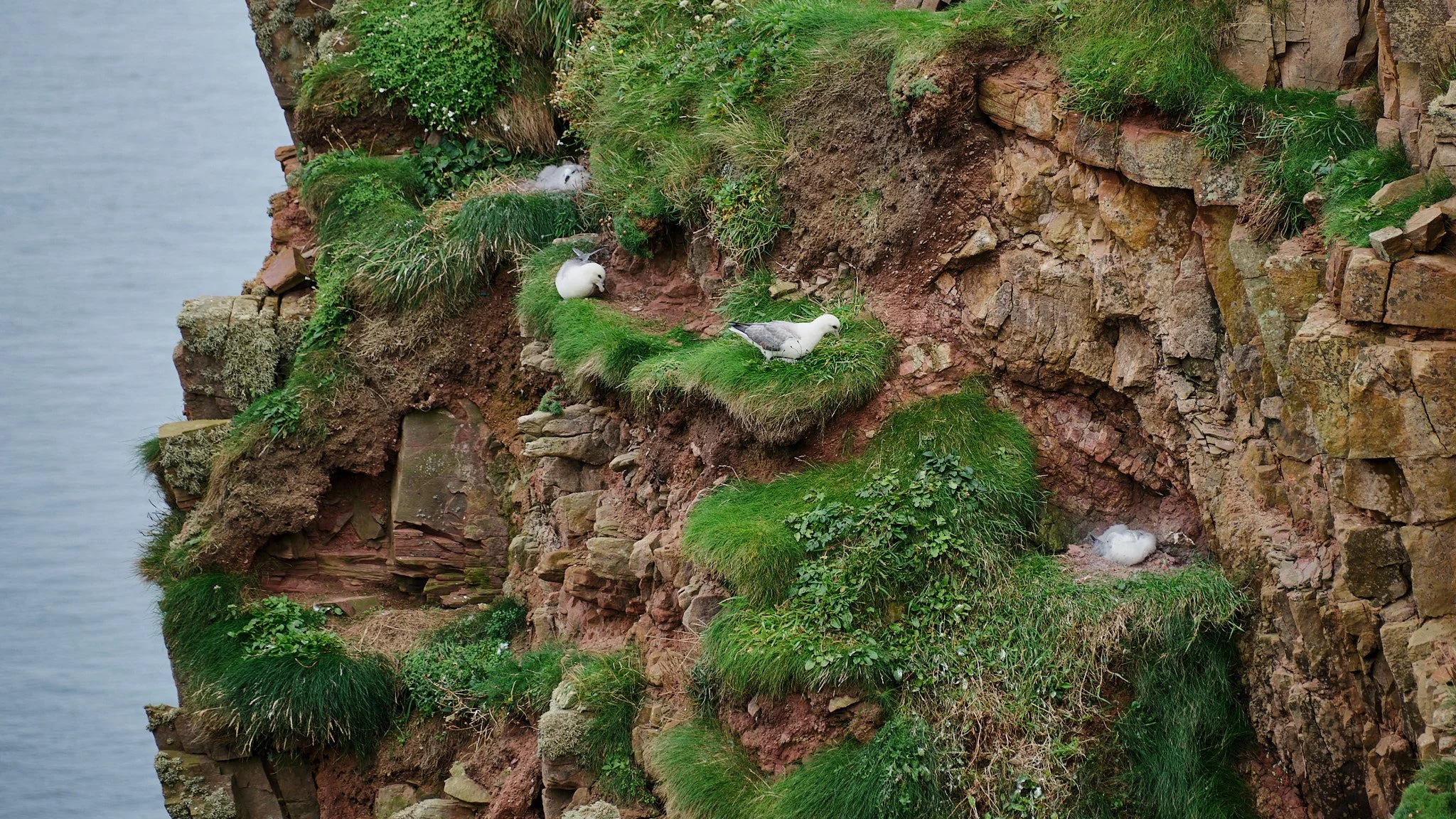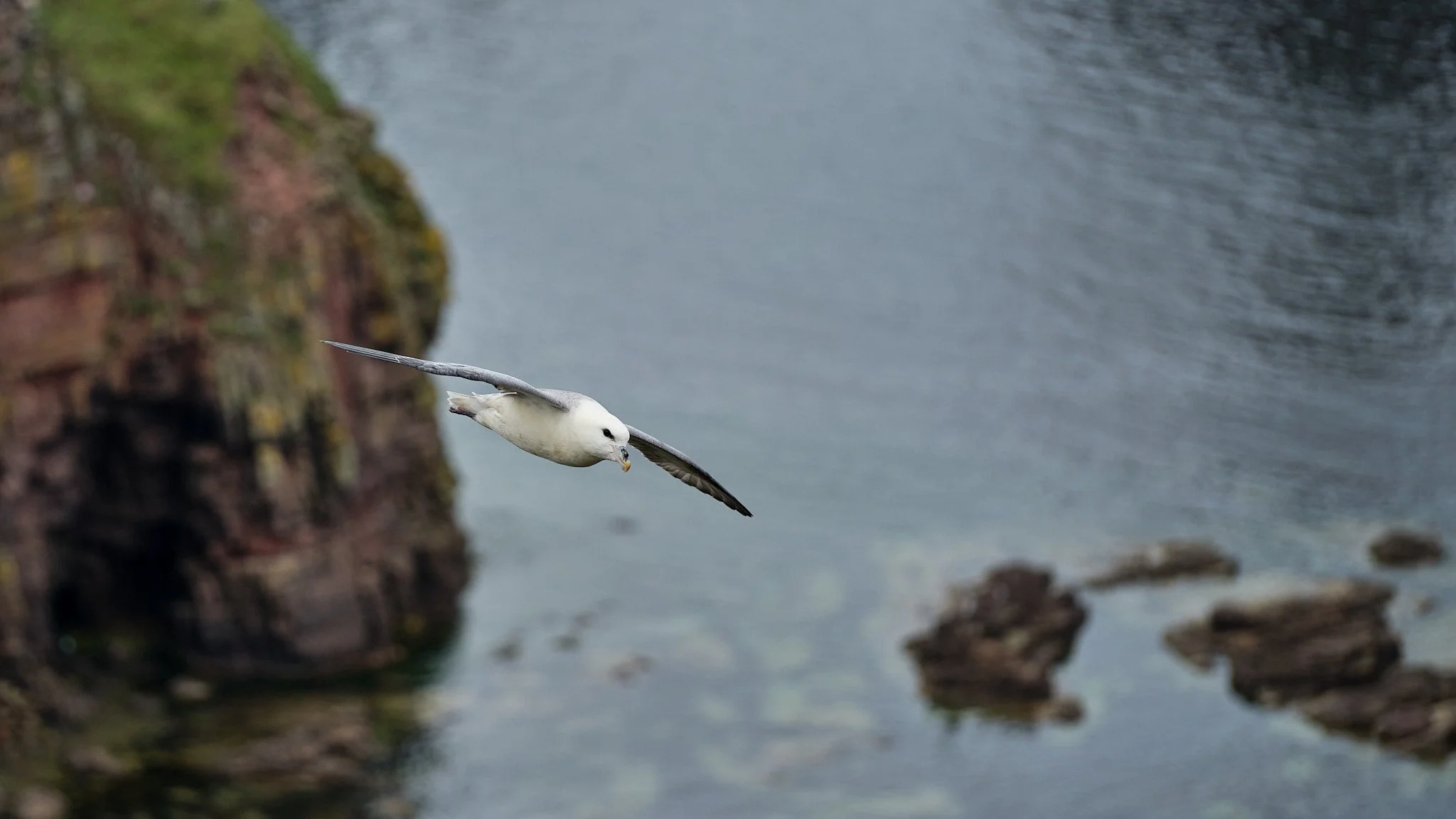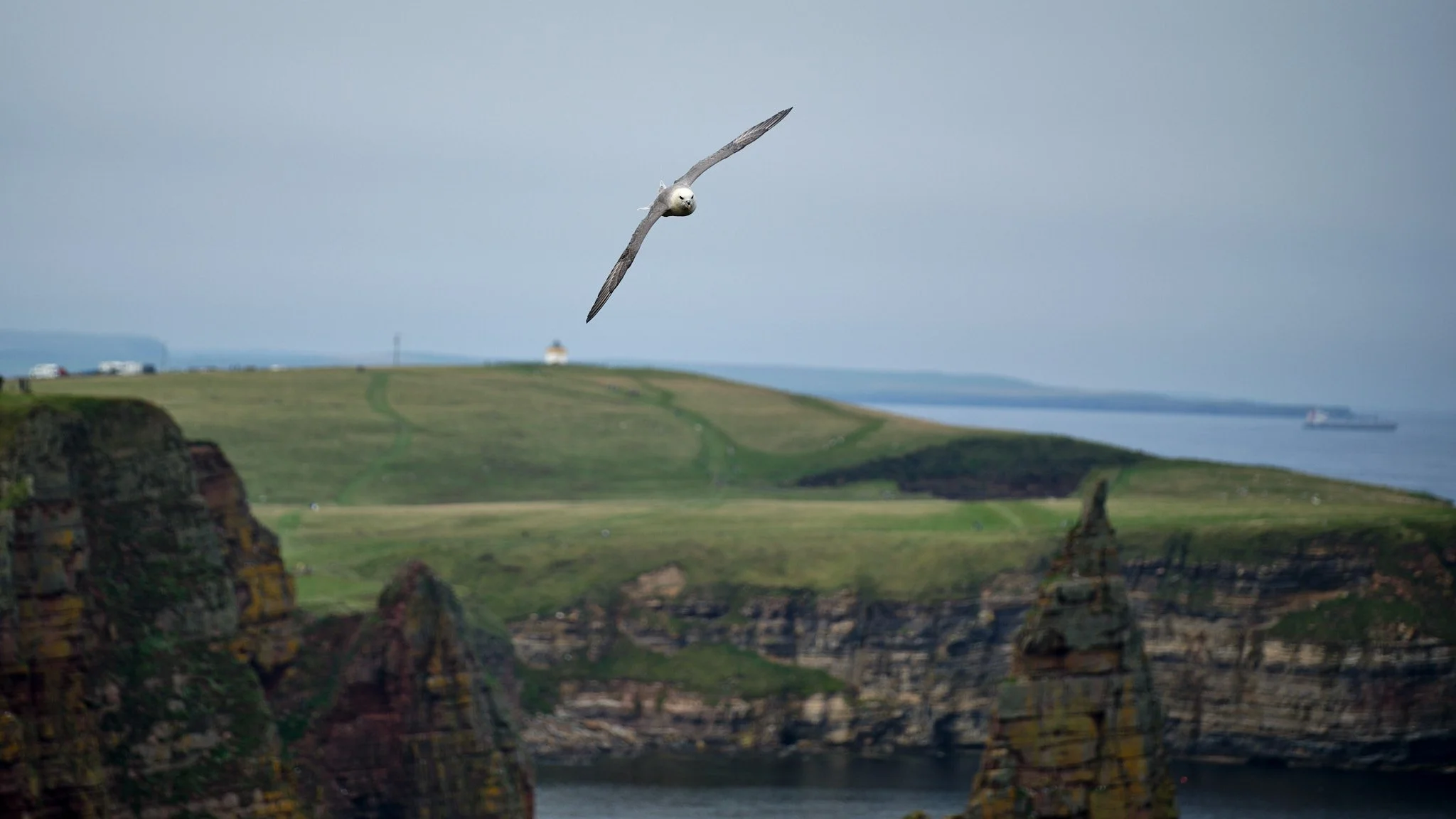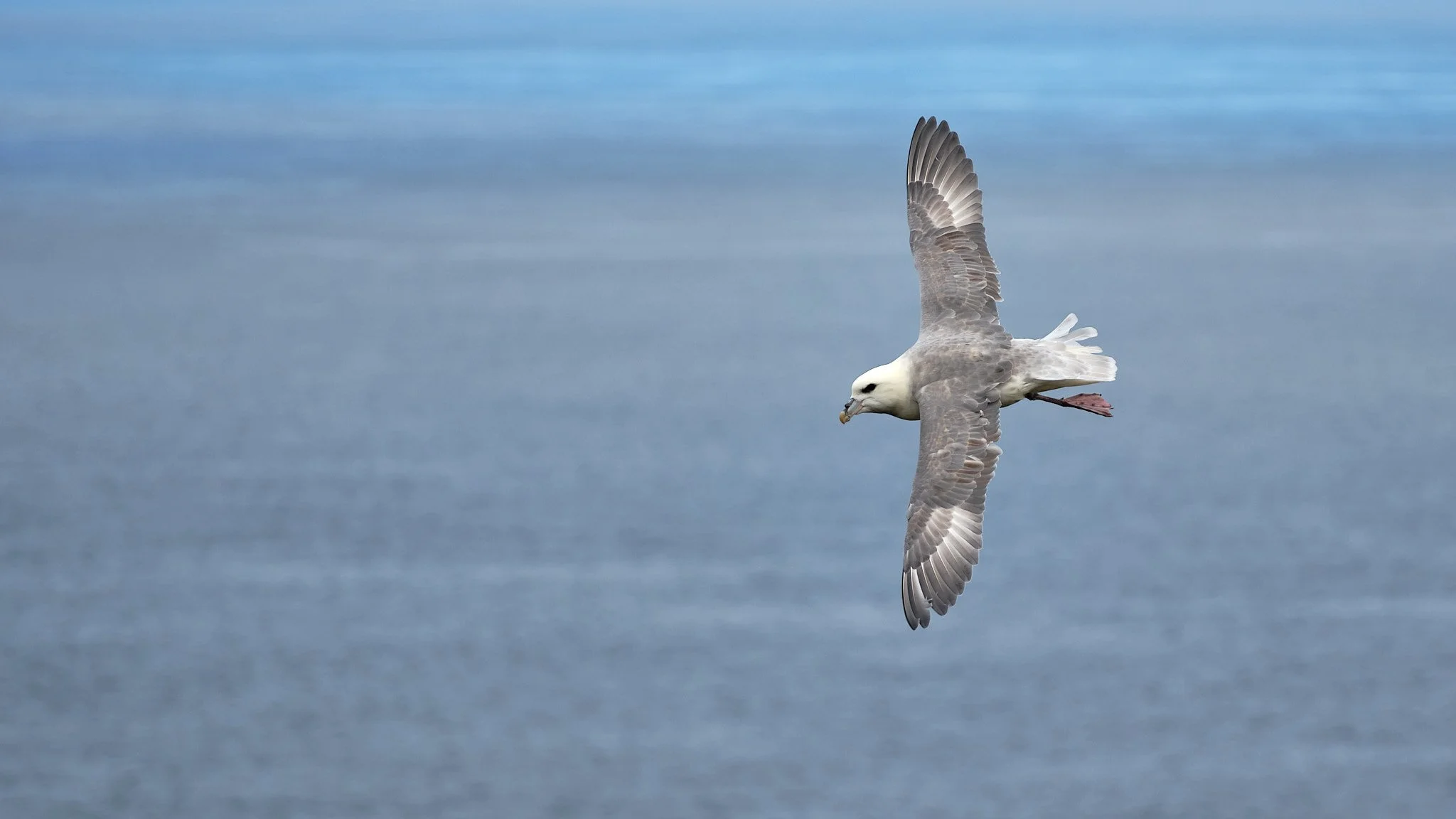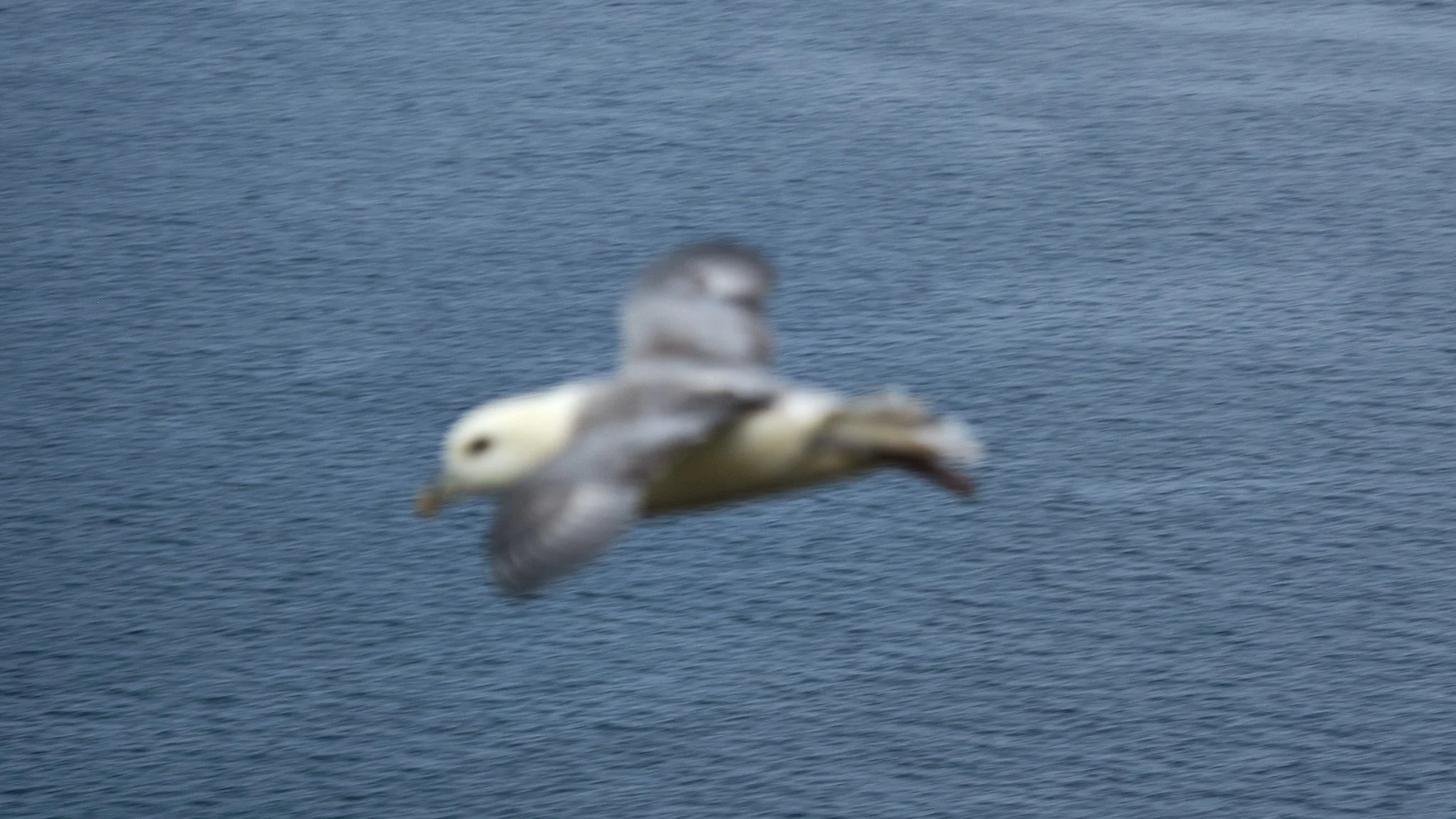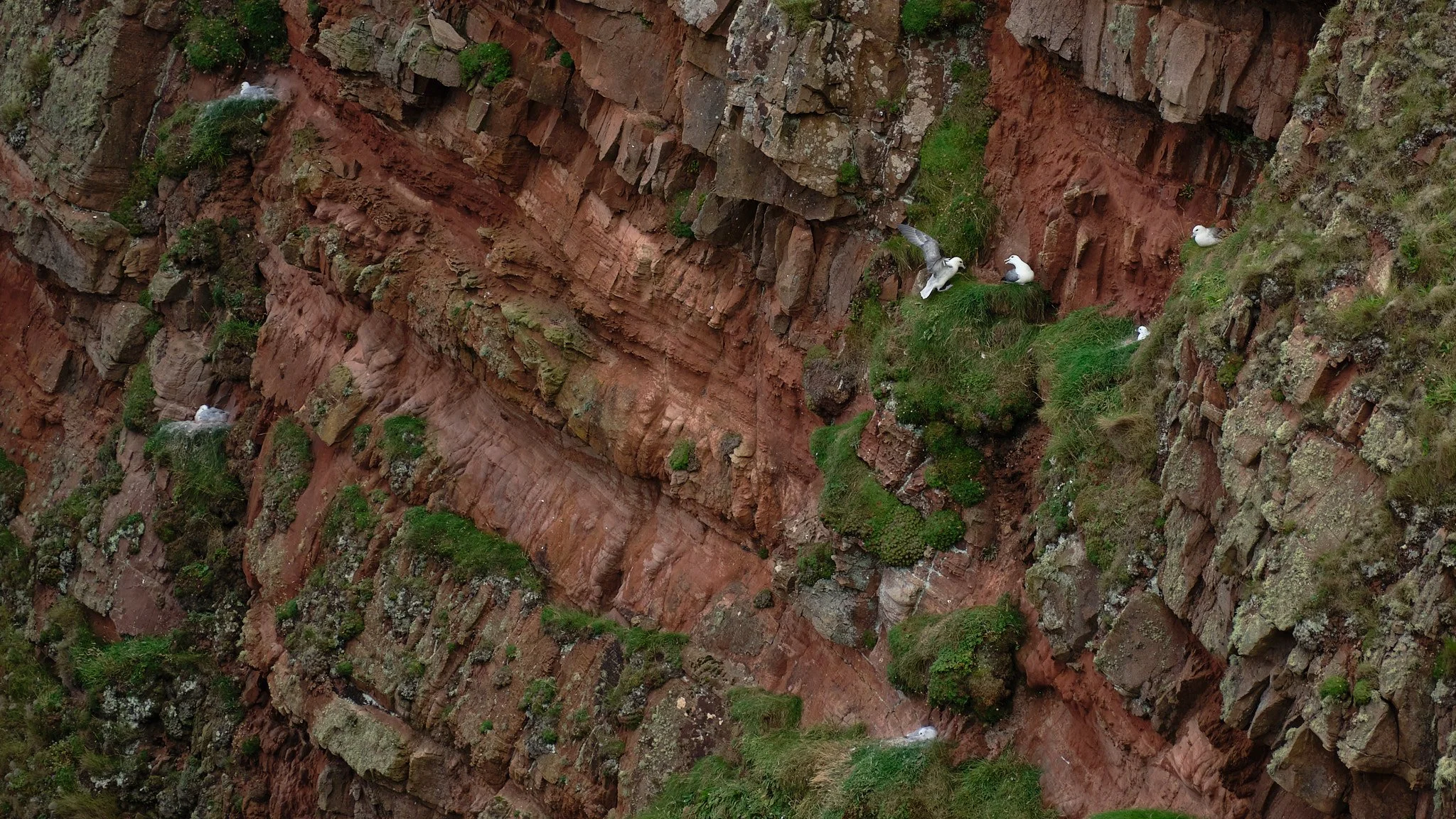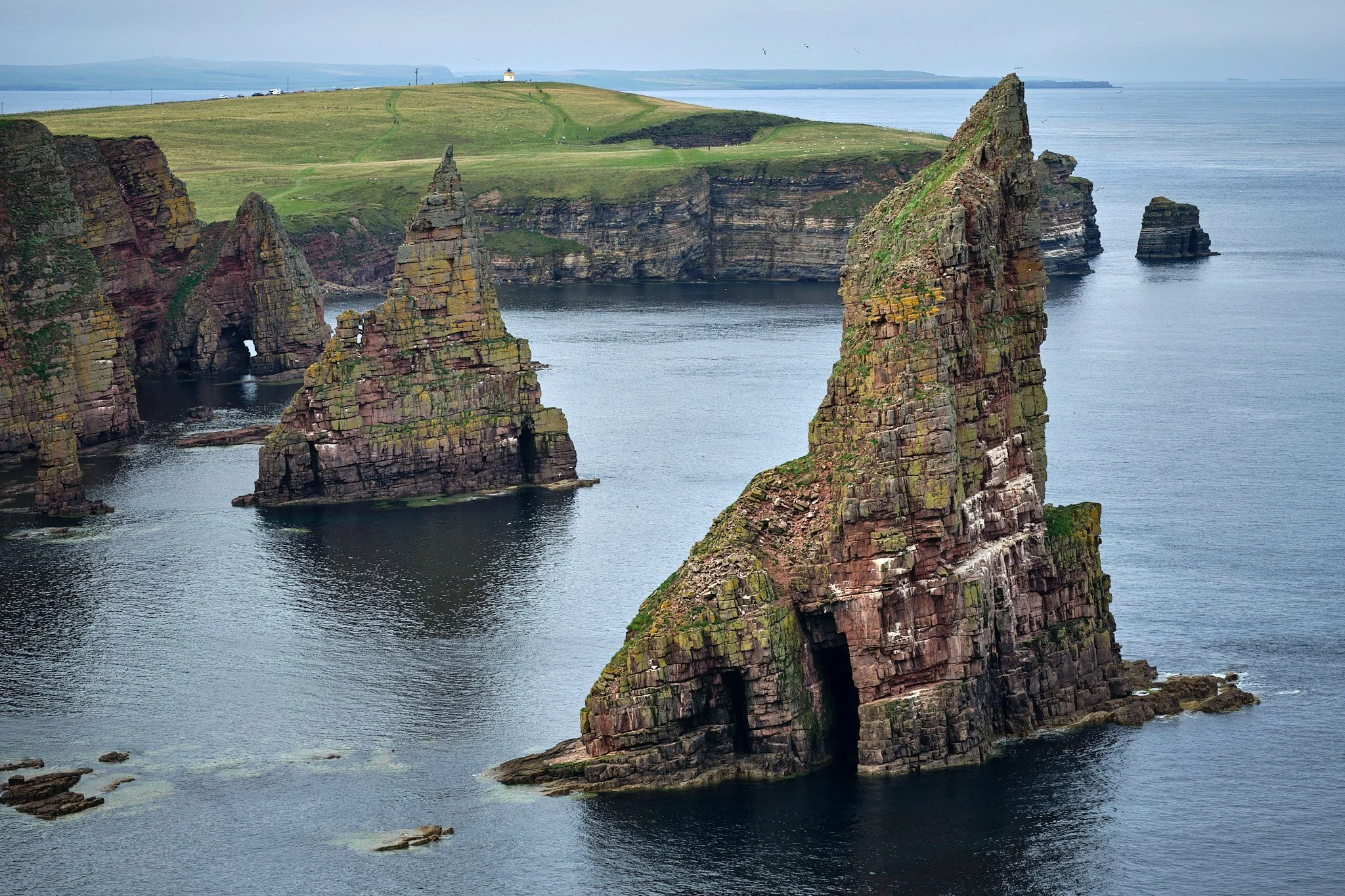FUJIFILM GFX 100S + GF100-200mm f/5.6 PHOTOGRAPHING BIRDS IN FLIGHT
2nd October 2025
Stacks of Duncansby,
near John o’ Groats, Scotland.
While waiting for the light to improve over the Stacks for the classic landscape view towards the Orkney Islands, I was being buzzed by Fulmars (Fulmarus glacialis) who had nests and offspring on the precarious cliff edges below.
I decided to make the most of the opportunity and mounted the Fujinon GF100-200mm f/5.6 R LM OIS WR lens on to the Fujifilm GFX 100S camera.
Of course, fast action, at close quarters is totally out of the comfort zone for a 102 megapixel ‘medium format’ digital camera.
Fujifilm GFX 100S + Fujinon GF100-200mm f/5.6 R LM OIS WR ~ 200mm, 1/1000s @ f/5.6, ISO500
As I had often found on Fujifilm X series cameras, the AF-C (continuous autofocus) Custom Settings make little or no difference. I tried all 5 modes and made adjustments but the default 1. Multi Purpose worked at least as well as any of the others. I only ever use a single autofocus point, 20 plus years of motorsport photography had taught me the craft of following fast moving subjects without the need for seemingly random focus points ‘murmerating’ all around the viewfinder. The same goes for the drive setting, I only ever use single shot rather than ‘spray and pray’ bursts.
Fujifilm GFX 100S + Fujinon GF100-200mm f/5.6 R LM OIS WR ~ 200mm, 1/1000s @ f/5.6, ISO400
It was a challenge for sure, the GFX 100S does not feel alive like cameras specifically designed for action such as the Canon R1/R3, 1DX III or the Sony A1 series. In fact just about any DSLR camera from the past 20 years feels more responsive! Even with the camera kept ‘awake’, there is always a tiny pause when half pressing the GFX 100S shutter button, or the back ‘AF On’ button, before the lens acquires focus. The shutter (whether in electronic or mechanical mode) also has a slight delay after fully pressing the release button, so its necessary to actually shoot a fraction early in order to achieve the desired framing and composition.
Fujifilm GFX 100S + Fujinon GF100-200mm f/5.6 R LM OIS WR ~ 200mm, 1/1000s @ f/5.6, ISO320
I was pleasantly surprised by the success rate of about 75%. The best results were achieved with the lens zoomed at the maximum 200mm (a mere 158mm in full-frame terms). This gave a very short window to actually acquire focus and keep the bird within the frame. It is much easier with longer telephoto lenses where the birds are further away and can be tracked for much longer.
As you will see from the image below, when focus could not be achieved, it was way out. There were very few images that were ‘almost sharp’, this is actually a good thing. I’ve had many cameras in the past where an image looked in focus on the rear screen but wasn’t quite pin sharp when viewed on the computer. The ‘binary’ in focus/ hopelessly out of focus nature of the GFX 100S means instant feedback when out in the field shooting, a few times I didn’t even bother taking the shot when I realised that focus wasn’t going to be achieved.
Fujifilm GFX 100S + Fujinon GF100-200mm f/5.6 R LM OIS WR ~ 130mm, 1/1000s @ f/6.4, ISO500
The main conclusion to be drawn is that, of course, you would never buy any of the Fujifilm GFX cameras if your main photography is sport, wildlife or any other fast moving action. I use the GFX 100S because I believe it offers the best image quality currently available for landscape photography without spending ‘car money’ on something like a Phase One system. But with a bit of thought and practice, it works perfectly well for environmental images of birds in flight.
Fujifilm GFX 100S + Fujinon GF100-200mm f/5.6 R LM OIS WR ~ 200mm, 1/1000s @ f/5.6, ISO500
It would be interesting to try the GF 250mm or 500mm lenses at the Stacks of Duncansby or nearby Dunnet Head, with the birds filling the frame more.
However, for me, it was more enjoyable using a maximum of 200mm to show each Fulmar in its natural habitat as “it glides and it swoops to cliffside neuks, climbing and soaring, the Fulmar flies……now and then, in Caithness again, we hear the calling cries, the Fulmar flies…..“ *.
………in case you were wondering, the light never did improve for the landscape images.
Fujifilm GFX 100S + Fujinon GF100-200mm f/5.6 R LM OIS WR ~ 126mm, 1/640s @ f/5.6, ISO500
* lyrics from the Edwyn Collins + Carwyn Ellis cover of the Bert Jansch original...‘Fulmar’.
